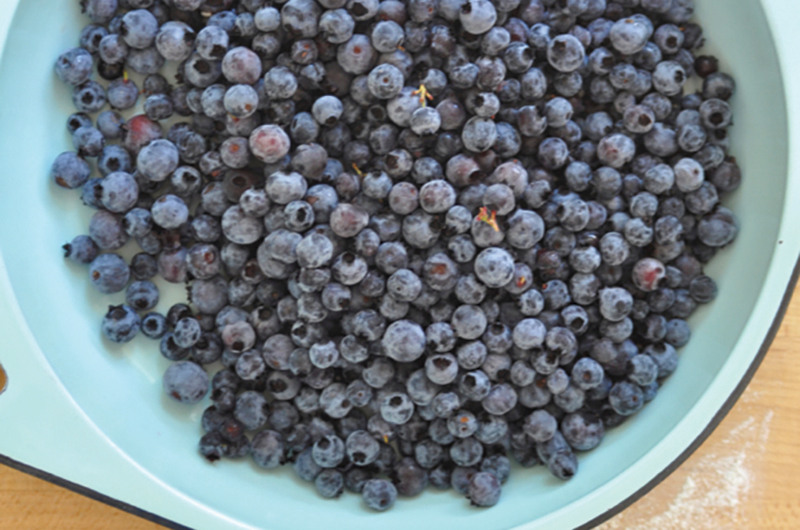These odd terms sound more like unkind names for your annoying neighbor, but actually, as many of you know, they are classic summer fruit desserts. While a blueberry pie is immediately recognizable, the greater world of baked summer berry desserts is more murky. And there is a big world of summer fruit desserts out there, so whether you are new to such treats or an accomplished buckle baker, I hope to encourage you to try something new, be it berries baked into a light and fluffy cake, dolloped with sweet biscuits, or sprinkled with a nutty oat topping.
All of these sweet confections have a lot in common – primarily fruit, flour, sugar, and butter, making them all more similar than different. But there are subtle differences that make a crisp a crisp and a cobbler a cobbler. So before you run for your mixing bowls, let’s explore the facts. (Pay attention, this will come in handy at your next cocktail party.)
The difference between a crumble and a crisp is that a crisp does not contain oats in the topping. Both desserts are baked fruit with some sweet, crumbly, crunchy topping made from sugars, spices, flour, and maybe nuts – but the presence or absence of oats is the identifying factor.
Cobbler, a dish of baked fruit with sweet biscuit-like dumplings baked into it, is a familiar term, so here is a pop quiz: Is a cobbler A) baked in the oven, or B) cooked on the stove-top? If you answered A you are correct!
Interestingly, a grunt is a cobbler-like creation cooked on the stovetop. The fruit is stewed and then topped with biscuits (like a cobbler) that are covered and steamed. Some sources say the name grunt comes from the sound that the fruit makes as it bubbles up between the biscuits, while others say that the name comes from the sound eaters make while enjoying it.
Other summer desserts have similarly literal names. A buckle, for example, is a cake loaded with so much fresh fruit that it falls, or buckles, in places while baking because the fruit sinks toward the bottom of the cake. A slump, a hybrid between a crisp and a cobbler with a high topping-to-fruit ratio, gets its name because the stewed fruit slumps when served.
Alongside these matter-of-fact recipe names are a host of romantic or oddball titles, like boy bait and brown Betty, that beg an explanation. Thankfully, a flip through old cookbooks reveals some clues. Boy bait – a moist cake with a light streusel topping similar to a coffee cake – got its name at the 1954 Pillsbury Grand National Baking Contest. The young girl who entered the recipe so named it, she said, because the teenage boys found it irresistible.
The old-school dessert brown Betty, a baked fruit dessert featuring two layers of buttery crumbs both on top of the fruit and under the fruit, has a more complicated origin. The first-known reference to a brown Betty appeared in an 1864 edition of the Yale Literary Magazine, where it is listed with tea, coffee, and pies as things to be given up during “training” (exercise). The word brown was written in lower case and Betty in upper case, which led to a long-standing debate over whether brown described the color of the cooked topping or the skin color of the woman for whom the recipe was named. We may never know for sure, but the Oxford Food Companion seems comfortable declaring that Betty was of African American or mixed race origin, and may even have been a servant or enslaved cook who invented the recipe.
Brown Bettys are often made with apples or other orchard fruits, but they’re also delicious with berries or similar summer offerings. The same goes for the other baked fruit desserts mentioned here: they’re equally successful with peaches, plums, blueberries, raspberries, or blackberries. Feel free to experiment with what you have on hand. Since it’s July and there are wild blueberries begging to be used, I recommend you start there.
As for what recipe you choose, that’s also up to you. Whether a buckle, crisp, or boy bait, it hardly matters in the end. They’re all really darn good.
The following recipe was originally published along with this article:







